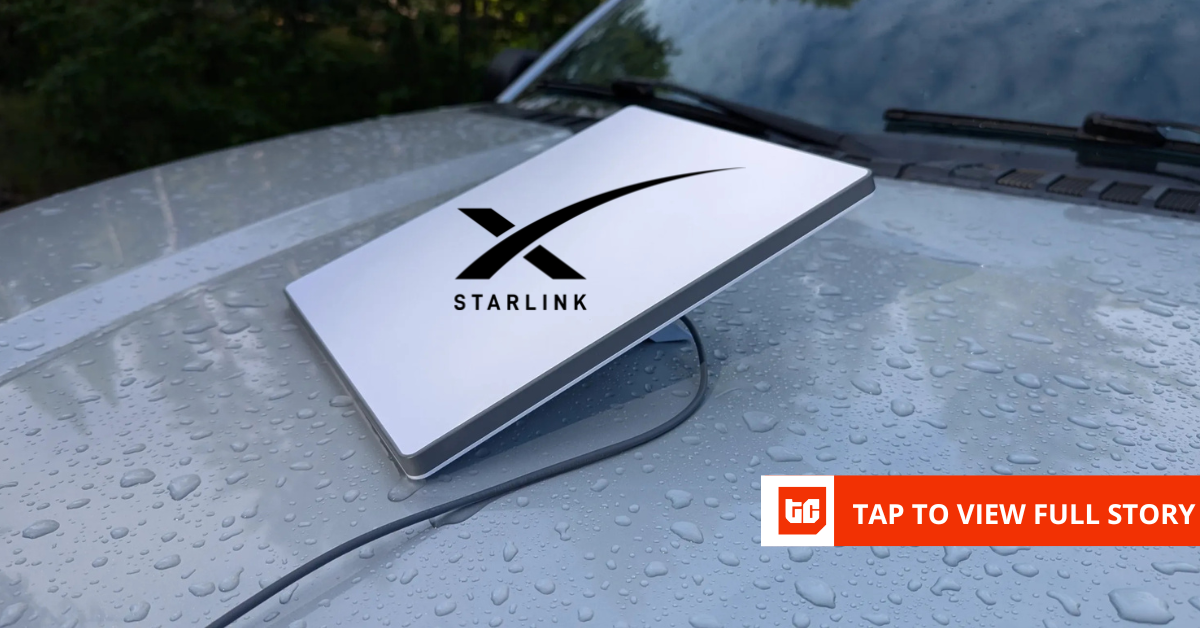In Zimbabwe’s busiest cities—Harare and Bulawayo—it’s hard to miss the white, pizza-box-shaped Starlink terminals mounted on cars. Even the humblest Honda Fit taxis cruise from suburb to suburb with these satellite kits bolted to their roofs, a visible symbol of the country’s latest tech interest.
When Starlink landed in Zimbabwe in late September 2024, it was noted as a big step forward especially for a country where reliable internet remains elusive outside the urban core. By Q1 2025, over 30,000 terminals were active nationwide, according to the Postal and Telecommunications Regulatory Authority of Zimbabwe (POTRAZ).
Starlink’s low-earth orbit satellite internet promises what traditional Internet Service Providers (ISPs) have long struggled to deliver – stable, high-speed, and wide-coverage internet. And in urban Zimbabwe, the appetite is visible and growing. “There is increased adoption by individuals, businesses, schools—even public institutions,” said Never Ncube, the CEO of Dandemutande, Starlink’s authorised reseller in Zimbabwe. “The services are being used as either primary and secondary internet links.”
Yet behind the uptake lies a deeper tension, who gets to connect and who gets left behind.
“While Starlink’s low-latency satellite tech is a game-changer in terms of reach and speed, cost remains a barrier as hardware purchases and subscription fees are priced in USD leaving many rural users still struggling to afford,” said John Arufandika, a digital transformation strategist at Aptiva AI.
In rural Zimbabwe, where over 60% of the population live, the picture is less futuristic. The same high-speed service is largely out of reach due to pricing. The standard hardware kit costs $350, while the smaller, portable Starlink Mini goes for $200. Monthly subscriptions start at $30 and must be paid in U.S. dollars—well beyond what most rural households, 76% of whom live below the poverty line, can afford.
The promise of rural kids online, farmers accessing weather data, and startups in remote towns is farfetched as “access in rural areas, so far, is mostly limited to missionary schools and donor-funded initiatives,” according to Arufandika.
A wake-up call for local ISPs?
Arufandika noted that Starlink’s arrival is also stirring unease among local internet service providers (ISPs), many of whom have long struggled to expand reliable connectivity to rural areas. While Starlink launched nationwide in September, local ISPs only received permission to offer similar satellite services in January 2025—giving the U.S.-based disruptor a significant head start. With rural network issues still unresolved in many areas, Starlink’s rapid entry is forcing a tough question: will this push local ISPs to improve and expand, or will they continue losing users to the more accessible alternative?
While the long-term impact remains unclear, Ncube cautioned that it’s too early to gauge how Starlink will reshape Zimbabwe’s connectivity landscape—whether through competition, collaboration, or hybrid strategies. A clearer picture may only emerge after a year of operations.
Arufandika noted that some ISPs have started using Starlink’s network as backhaul in remote areas, informally rerouting the service to extend their own coverage. But under Starlink’s current direct-to-consumer model, local players are left without formal reseller pathways or enterprise-grade partnerships.There is limited support for local reseller models, meaning many ISPs feel locked out unless they find workarounds.
“The field is not level,” Arufandika added. “Starlink in Zimbabwe operates with fewer ground infrastructure obligations and lighter regulatory demands. It’s hard for local players to compete when they are not playing by the same rules.”
POTRAZ has signaled a willingness to revisit licensing and spectrum frameworks to accommodate non-terrestrial networks. But for now, policy lags behind technology—and that gap is being exploited.
“There are legitimate questions around digital sovereignty,” said Arufandika. “Who owns the infrastructure? Who controls the data? And what happens when critical connectivity is routed through foreign satellites beyond local jurisdiction?”
As seen in Nigeria, where local ISPs are already losing market share to Starlink, Zimbabwe may be heading down a similar path. Unless local operators adapt quickly—and regulators level the playing field—the country could see a deepening digital divide where only the connected few reap the benefits of the satellite era.
Mark your calendars! Moonshot by is back in Lagos on October 15–16! Join Africa’s top founders, creatives & tech leaders for 2 days of keynotes, mixers & future-forward ideas. Early bird tickets now 20% off—don’t snooze! moonshot..com











